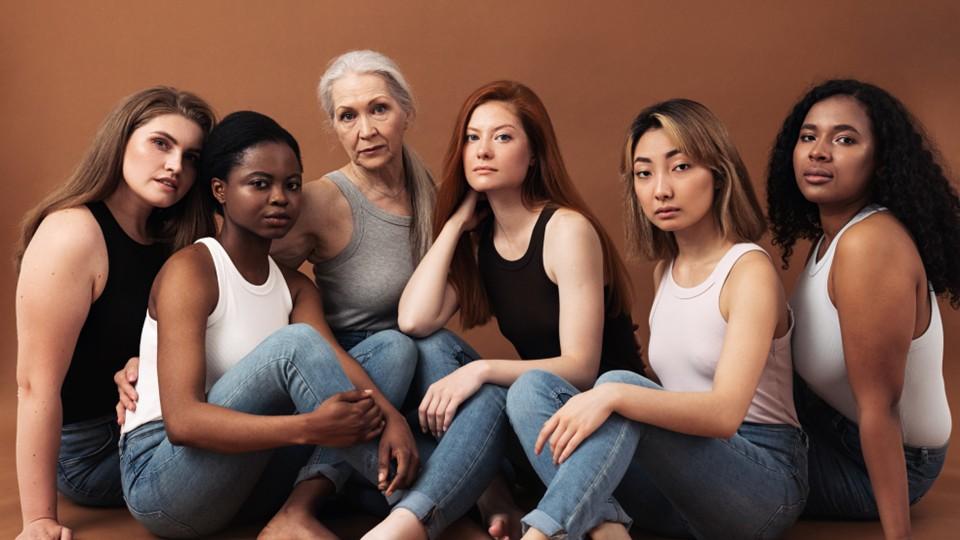Women’s health is a priority not a charity

Women make up half of our planet’s population. However, health conditions that affect women more than men remain consistently underfunded, drawing significantly less funding, research, and attention. These inequalities persist, despite there being enormous benefits to closing the gender health gap.
The prevailing narrative often neglects the profound impact such investments can have on both individual lives and the global economy. A recent insight report by the World Economic Forum and the McKinsey Health Institute underscores the magnitude of this oversight. Despite living longer than men, women spend 25% more of their lives in poor health.1
With the current global labour force participation rate for women at just under 47%, compared to 72% for men, investing in women's health is not just an ethical and moral imperative, but a substantial economic opportunity.2 Addressing the gender health gap would empower billions of women to lead healthier lives, enabling them to participate more actively in the workforce. This would unlock the potential to inject a staggering $1 trillion annually into the global economy – far from negligible.
It's a glittering reminder that women’s health – a market that’s been traditionally underserved – is far from its commonly ascribed view of being “niche”. It’s a vast market with abundant potential.
Funding
Despite super exciting technological innovations such as AI, the reality is that simply not enough is known about fundamental conditions that only affect women, or about how conditions that affect both men and women impact them in different ways.
For a long time, a lot of funding has been dedicated to conditions that either affect both men and women, or just men. In fact, in nearly three-quarters of cases where a disease primarily affects one gender, it is men's diseases that are overfunded, while women’s health issues remain dramatically underfunded.3 For instance, there is five times more research into erectile dysfunction, which affects 19% of men, than into premenstrual syndrome, which affects 90% of women.4
This extends to other women- or uterus-specific conditions like endometriosis, menopause, and uterine fibroids - an extremely common gynaecological condition affecting millions of women in the UK, with up to 80% of women affected by the age of 50.5 Astonishingly, despite the significant burden of fibroids on women, it remains a largely understudied, overlooked, and underfunded public health issue.
This is despite the fact that fibroids are the main reason for hysterectomy in the US, accounting for about 39% of these surgeries.6 In Britain, the benign tumours are responsible for about 13,000 hysterectomies each year.7 Yet, there is still a worrying lack of long-term, fertility-preserving, non-invasive treatments available for women with fibroids.
Exclusion from research
This lack of priority for women’s health has long been systemic, with deep historical roots. For much of documented history, women have been consistently underrepresented in clinical trials, leading to centuries of female exclusion from research. The result is that women’s diseases are still today often missed, misdiagnosed, or poorly understood.
In the US, it wasn’t until 1993 that the FDA and the NIH mandated the inclusion of women in clinical trials. Consequently, we still understand far less about every aspect of female biology compared to male biology, translating into fewer available and less effective treatments for women today.
In the past 40 years, only two new drugs have been approved for use in pregnancy, which highlights a glaring gap in research and development for women's health. Additionally, research shows that, for a wide range of diseases such as cancer and diabetes, women are consistently diagnosed later than men, and they also experience significantly more adverse drug reactions than men.8
For too long, medicine and research has defaulted to the male body, treating the female and male bodies as different, but not equal. The research landscape has been designed in a way that most of our understanding of health conditions comes from the perspectives of men, largely based on studies of men, carried out by men.
The result is that we’ve ended up with a healthcare system that has been made by men and not designed or capable in its current capacity to meet the day to day needs of women.
Increasing representation
Despite progress, the gender health gap remains wide, underscoring a huge underinvestment in women's health. This inadequacy is not isolated; it resonates with a broader lack of female representation throughout the decision-making chain, extending from the healthcare ecosystem into traditionally male-dominated industries like MedTech, where women remain woefully underrepresented.
Between 2016 and 2020, a mere 1.7% of all capital found its way to female founders. This trend is further accentuated by the fact that only 14% of angels in the UK are female, and a disproportionate number hold senior partner roles in venture capital firms. While this discrepancy might not come as a surprise, its tangible consequences are significant. Studies consistently demonstrate that companies founded and led by women yield a remarkable 35% better return on investment than their male-led counterparts. Despite this, a mere 3% of total funding is directed towards companies founded by women.9
A smart investment
Allocating resources to bridge the gender health gap is not just about being charitable; it is about acknowledging the significant role women play in society and the workforce. It’s a smart investment, with huge potential economic benefits.
While understanding the problem is crucial, actively participating in the solution is the next imperative step. Elevating female representation in decision-making processes will lead to a more nuanced comprehension of the diverse needs, products, and services essential for women, both now and in the future. Consider Denmark, where the government is supporting an EU directive aimed at enhancing the presence of women in senior business roles. These initiatives are not simply performative. Diversity and inclusion should not be seen as fleeting trends, but the drivers of true innovation.
The economic benefits of prioritising women's health are immense, and this shift should be viewed as a priority. By understanding and acting on the significance of women's health, we pave the way for a more equitable future for all. In health alone, it’s a monumental $1 trillion opportunity.
References
- https://www.weforum.org/publications/closing-the-women-s-health-gap-a-1-trillion-opportunity-to-improve-lives-and-economies/#:~:text=While%20longer%20life%20expectancies%20for,ripple%20effects%20for%20broader%20society.
- https://www.ilo.org/infostories/en-GB/Stories/Employment/barriers-women#global-gap
- https://www.liebertpub.com/doi/epub/10.1089/jwh.2020.8682
- https://www.theguardian.com/education/2019/dec/18/women-have-been-woefully-neglected-does-medical-science-have-a-gender-problem
- https://www.womenshealth.gov/a-z-topics/uterine-fibroids
- https://swhr.org/swhr-supports-bill-to-improve-fibroids-education-and-research-funding/
- https://www.reuters.com/article/idUSN24441416/#:~:text=About%2030%20percent%20of%20all,the%20bladder%2C%20or%20bowel%20obstruction.
- https://www.weforum.org/agenda/2023/01/is-this-the-world-s-best-and-most-under-financed-investment-davos23/
- https://www.femaleinvest.com/magazine/the-vc-funding-gap-is-widening-investors-show-how-women-can-plug-it-once-and-for-all













